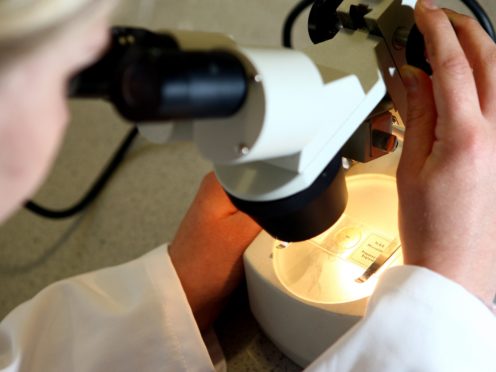
Scientists have developed new technology that sheds light on the “very earliest stages of colon cancer” by looking at genetic mutations in healthy tissue cells.
Researchers from the Wellcome Sanger Institute and their collaborators have used this technology to sequence the genomes of colon cells and study their mutations in detail.
Mutations that cause cancer have previously been identified in tumour tissue but technical limitations prevented them from being spotted in healthy tissue.
The scientists say the results, published in the journal Nature, will help them understand how a healthy cell becomes a cancerous one.
There are 42,000 new cases of colon cancer every year in the UK and it is the second most common cause of cancer death.
Cancer is caused by mutations in certain genes and when there are enough mutations, a cell may become cancerous and divide uncontrollably to form a tumour.
In their new study, the researchers developed methods to describe the genome sequences of healthy colon cells and uncovered some mutations that were at “the very earliest stages of colon cancer development”.
While the cells looked normal in shape and size, they had distinct patterns of genetic changes, the researchers said.
But Henry Lee-Six, first author of the research from the Wellcome Sanger Institute, points out that while these mutant cells are abundant, “a vast majority” of them won’t actually “go on to cause cancer”.
The researchers say their findings provide clues as to why some tissues are more more prone to cancer than others.
To identify the mutations, the team used a technique known as laser capture microscopy to cut out tiny cavities – called crypts – in donated colon tissue samples.
The researchers then developed a new workflow to sequence the genomes of these crypts and automated the process to enable tens of thousands of genomes to be swiftly sequenced.
Professor Sir Mike Stratton, director of the Wellcome Sanger Institute and lead author of the research, said: “The ability to find mutations in normal cells means we can now describe how many and what types of mutations there are in different tissues across the human body, potentially providing understanding of what makes some tissues more prone to cancer than others.
“In this study we identified new patterns of mutations, known as ‘mutational signatures’, in the genomes of normal colon cells that provide clues to the causes of those mutations and thus may lead to uncovering hidden causes of colon cancer.”

Enjoy the convenience of having The Sunday Post delivered as a digital ePaper straight to your smartphone, tablet or computer.
Subscribe for only £5.49 a month and enjoy all the benefits of the printed paper as a digital replica.
Subscribe